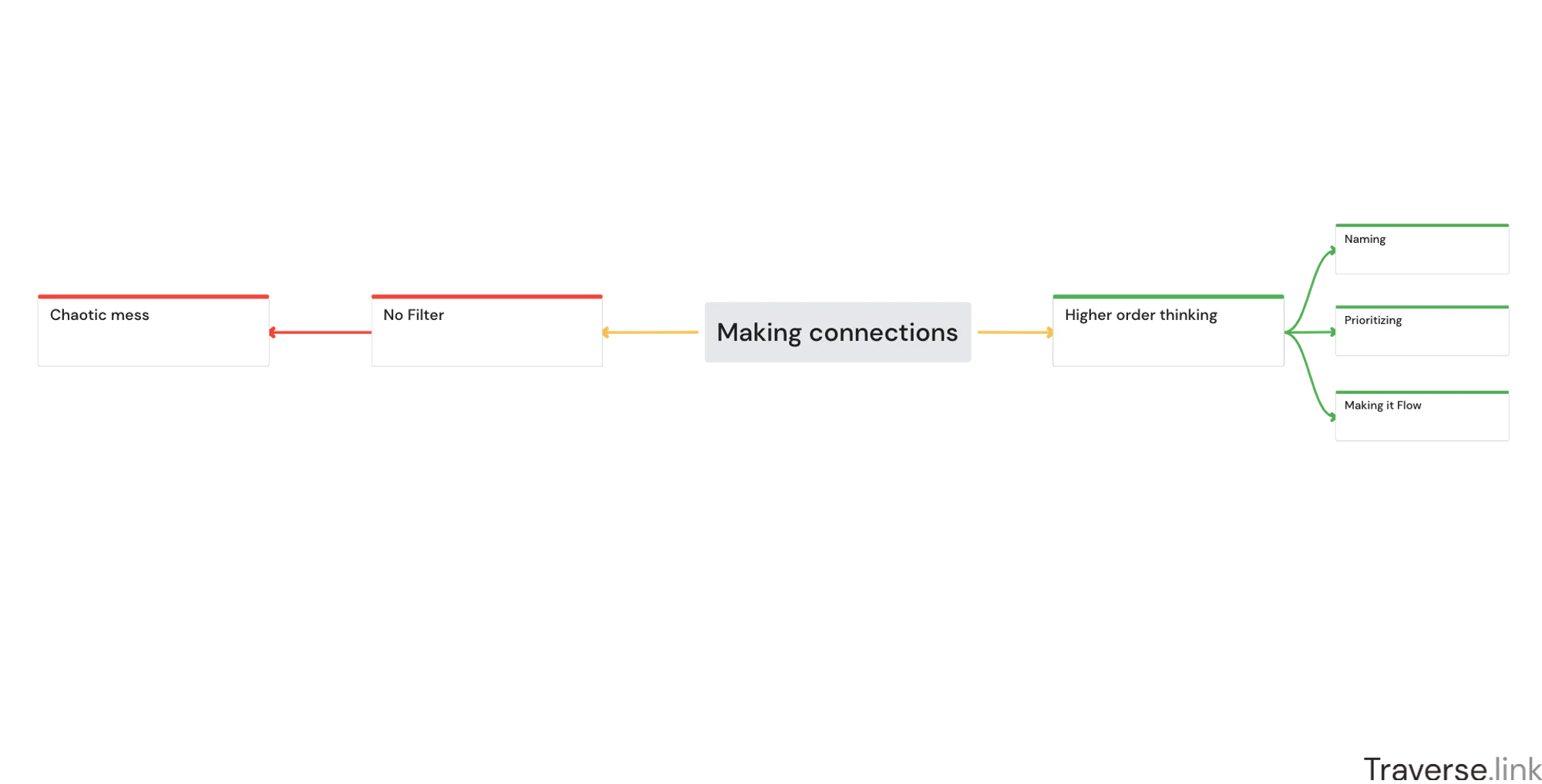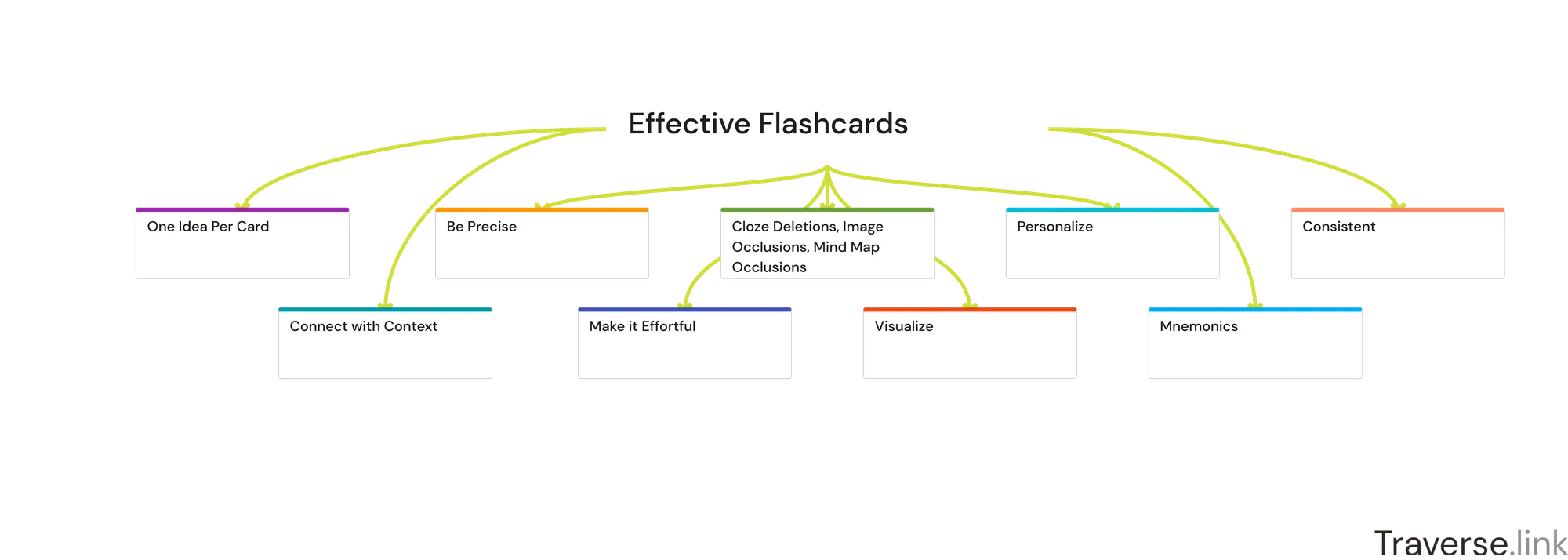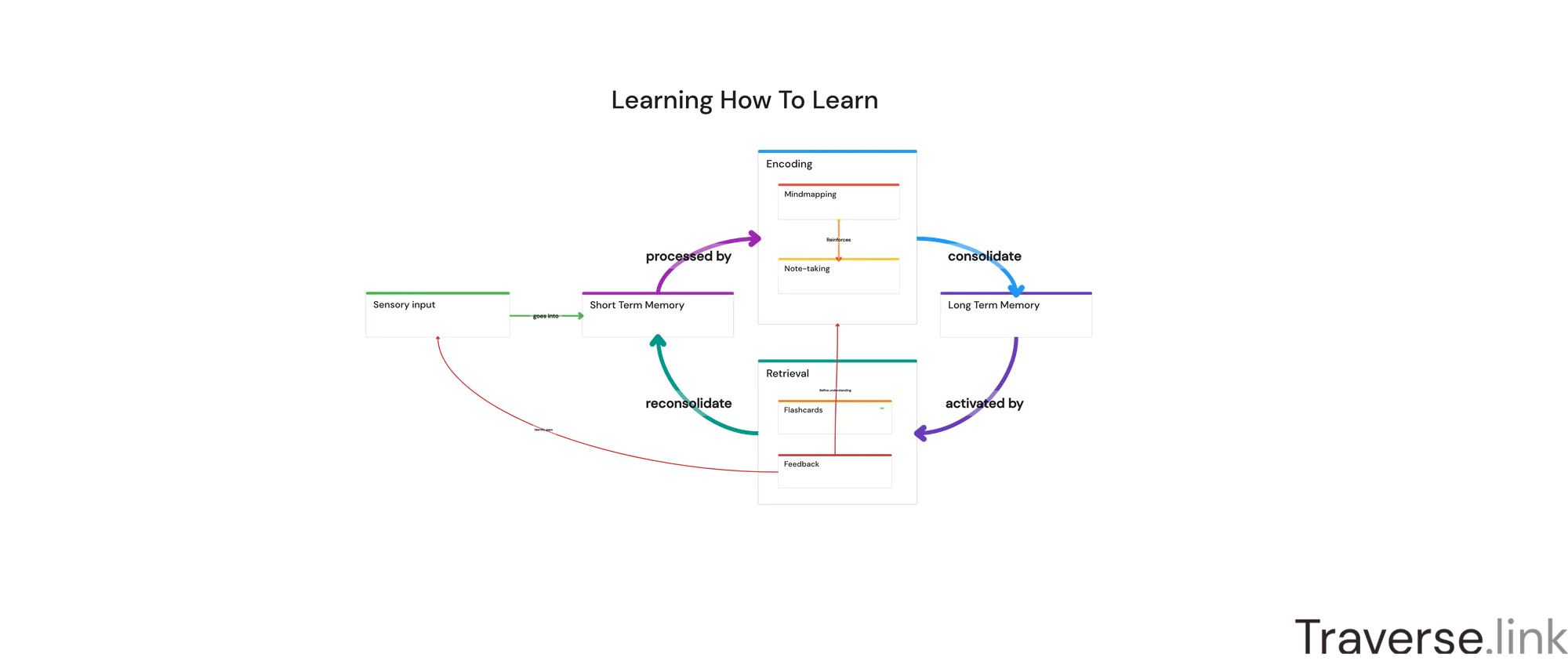Higher order connections (Pretext: Are you making this mistake?)
You’ve heard of the importance of connecting your notes: making links (and backlinks) to create a network of notes. But if you are anything like me, you have experienced that after linking every note to anything that even seems remotely related to it, you end up with something that resembles the following:

There sure are a lot of links. But, if this is supposed to represent what’s going on in our brain, it seems like an unhelpful mess.
Today, I’ll explain why it’s easy to overdo links, and how instead, you can be conscious about making connections, and learn deeper.
Due to the world-wide web, and applications built on top of it, pretty much anyone today knows what a link is, and can link together various resources.
And there are a lot of resources nowadays… ideally we’d like to read them all, and retain them all, right?
So we link our notes to article A we want to read, and YouTube video B we want to watch, and something we scribbled down last week which seemed relevant to what we’re reading now. Again, you end up with something that resembles the screenshot inserted above.
This picture was taken in the app Roam Research, which introduces the concept of backlinks into note-taking. Like the author of the source article, my notes soon started looking like this after I first tried it.
Making connections is essential to learn - everyone knows this (and if you’ve ever been in a learning app where you couldn’t make connections - you might have felt limited like you were memorizing isolated facts).
But in order to get this learning benefit, you can’t just link anything to anything. Instead, you have to be conscious about your connections…
Which means using higher-order thinking. If you remember, higher order thinking is the upper half of Bloom’s taxonomy pyramid:

How do we put that into practice?
There are 3 major ways to this:
- Name your connections [Analyze]
It’s easy to just link up something. But just requiring that you give every link a name forces you to think about what that link actually means. Let’s say I have linked notes A and B, and I link them up. It could mean several things:
A
causes BA
supports BA
contradicts BA
exemplifies Betc….
By giving your connections a name, you are forced to think about their relation, which makes it much more likely that this connection will end up in a usable way in your brain (rather than just remaining a hyperlink in the digital world).
- Prioritize your connections [Evaluate]
Not all connections are created equal: In any complex topic, after getting familiar with it, you will notice that some connections are used over and over again. These are the real core connections that should be top of mind. Which ones are noise?
It’s the ones that are still valid but less important. Also, there might be connections you initially made that turn out to be wrong as you master the topic.
These links are just adding noise, so you should filter them out (don’t be afraid to delete things that hold you back!)
- Make it flow [Create]
When visually mapping out a topic, its subtopics should be connected in a way that flows logically, with a clear start and end point. (This, by the way, is related to the Feynman technique: the way your map flows is the way you would teach the topic to someone else).
Contrast the above mess with this mind map (on the topic of the learning process)

Traverse enables you to label your links and set their size based on their priority to empower you to use higher order learning.
By using links in this way, they will help you learn deeper. They also help you bring structure to your notes, rather than just resulting in an ever-growing mess.
Look at the links you’ve created for the topic you’re learning right now, and go through the 3 steps above to name, prioritize and arrange your links into a flow that helps you deeply grasp the topic.
Read More
Resources





